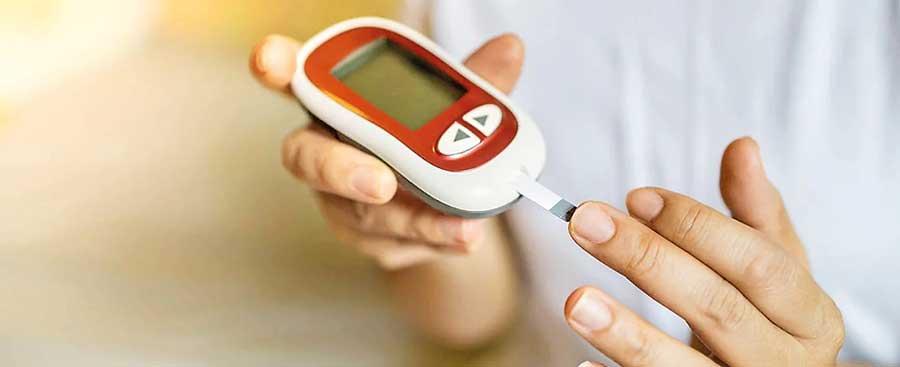27 Feb 2023 - {{hitsCtrl.values.hits}}
The results indicate that even Sri Lankans who are not overweight have a high risk of developing diabetes, since even one in five adults who were not overweight also had diabetes

The first survey of the Sri Lanka Health and Ageing Study (SLHAS) conducted in 2018/2019 has found that almost one in four adult Sri Lankans (23%) have diabetes, which is the highest rate of diabetes in Asia. More worryingly, more than one third of Sri Lankan’s with diabetes have not been diagnosed. Their findings have just been published by the British BMJ’s diabetes journal …
one in four adult Sri Lankans (23%) have diabetes, which is the highest rate of diabetes in Asia. More worryingly, more than one third of Sri Lankan’s with diabetes have not been diagnosed. Their findings have just been published by the British BMJ’s diabetes journal …
The SLHAS is a long-term national health study managed by the Institute for Health Policy (IHP) and Colombo, Peradeniya, Ruhuna and Rajarata universities. The survey was funded by the Swiss National Science Foundation and IHP, and supported by the Ministry of Health and Dr. RenukaJayatissa, whose laboratory at the Medical Research Institute conducted all the laboratory testing. One objective of the researchers was to obtain reliable and internationally comparable estimates of how many Sri Lankans have diabetes and they examined and tested almost seven thousand Sri Lankans from three hundred communities across the island.
The results indicate that even Sri Lankans who are not overweight have a high risk of developing diabetes, since even one in five adults who were not overweight also had diabetes. The World Health Organisation’s Asian Body Mass Index cut-offs, which doctors use to classify people as overweight or obese do not appear adequate to capture the increased risk of diabetes in Sri Lankans and probably in other South Asians.
|
Dr Ravi RananEliya |
Diabetes is a growing cause of global mortality and morbidity, and driver of healthcare costs. Global studies by the NCD Risk Factor Collaboration (NCD-RisC) and the International Diabetes Federation (IDF) indicate that diabetes in developing countries is increasing faster than in developed countries with the risk of having diabetes at any given age being higher in developing than rich countries. “Our findings show that Sri Lanka has one of the highest rates of diabetes in the world, since only a few places, such as some Pacific Islands, Mauritius, Kuwait, Qatar and Egypt, have higher rates,” said Dr. Ravi Rannan-Eliya, a co-author of the study and Executive Director at the IHP. “In our survey, factors associated with higher prevalence of diabetes included higher living standards, urban residence, living in richer areas and higher BMI. We also found that 30% of adults also have pre-diabetes, which is the precursor to diabetes.”
Even though the study doesn’t differentiate between Type I and Type II diabetes, the study data suggests that more than 95% of diabetes in Sri Lanka is Type II diabetes.
Discussing the reasons for this high prevalence of diabetes in Sri Lankans and also some other Asian countries, Dr. Rannan-Eliya said that he thinks one possible explanation is epigenetics, which is a scientific idea that has gained currency in recent decades. “Scientists have learnt that there are certain switches which influence how our DNA -or genetic traits – is expressed, and that the settings for these switches are influenced by the environment we are exposed to. Evidence is now accumulating that these settings can be inherited from one generation to the next, so the way our body is partly adapted to the environment which our parents or even grandparents were exposed to. There is speculation that South Asians have a ‘thrifty gene’ which may be the legacy of many centuries of inadequate nutrition since the British Raj or before. In effect our physiology is adapted to inadequate food intakes, so with economic development in the past century, our bodies are not able to cope well with the increased availability of nutrients, especially glucose.
The researchers found that diabetes is highest in Western a Province and parts of the Northern and Eastern provinces. Their findings also indicate that diabetes prevalence increased with age before declining at around 70 years and was higher in women than men at most ages. However, there was little difference between men and women with the same BMI, which suggests that the higher prevalence in women may be mostly driven by higher BMI and overweight.
A key strength of the SLHAS study is that it used both fasting plasma glucose and oral glucose tolerance tests to detect diabetes and pre-diabetes and that it covered all demographics and districts in Sri Lanka. However, the researchers acknowledged some limitations in the study including the inability to differentiate between insulin and non-insulin dependent diabetes, relying on participants word that they had fasted before their tests, and not being able to do a repeat confirmatory test in study participants.
10 Jan 2025 26 minute ago
10 Jan 2025 34 minute ago
10 Jan 2025 46 minute ago
10 Jan 2025 48 minute ago
10 Jan 2025 53 minute ago